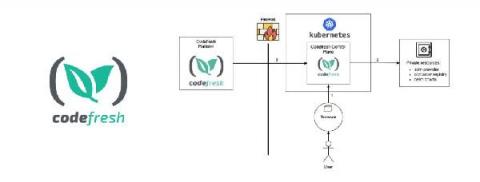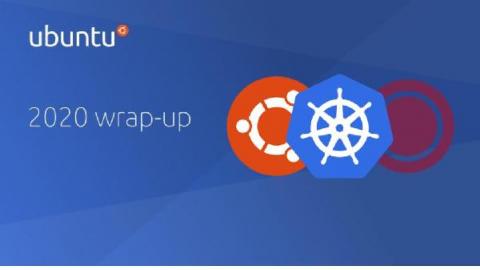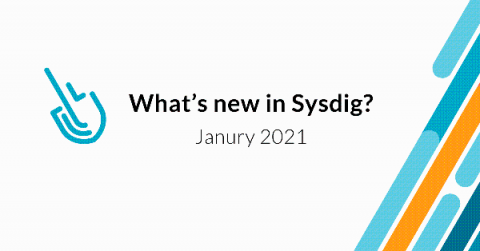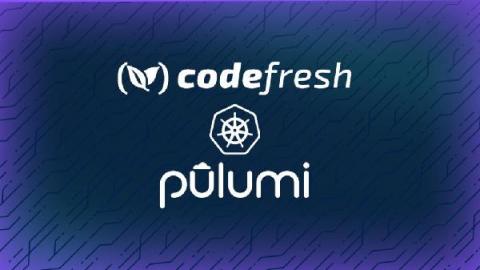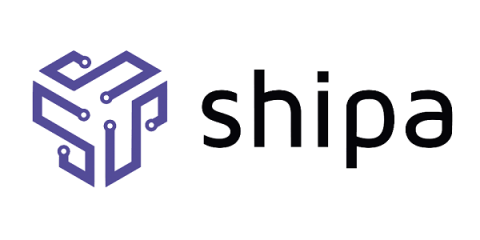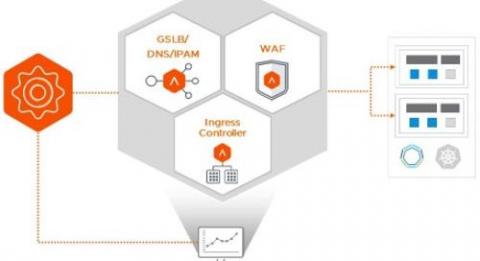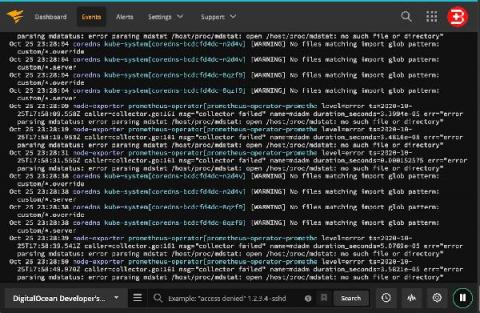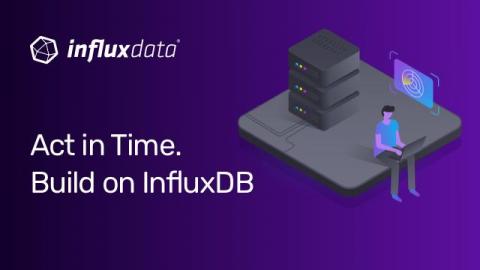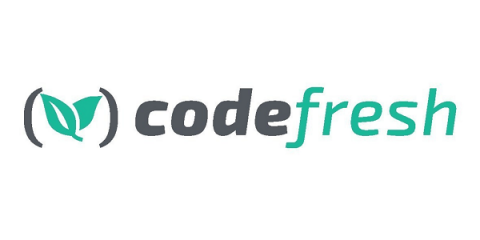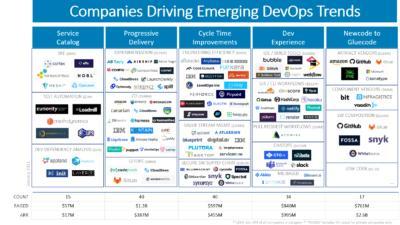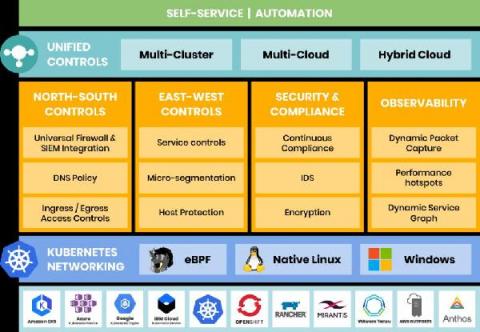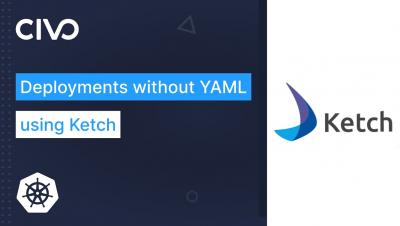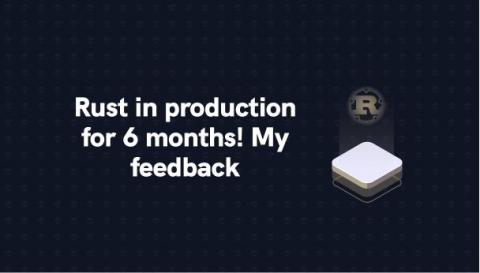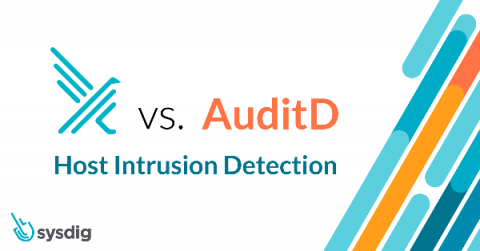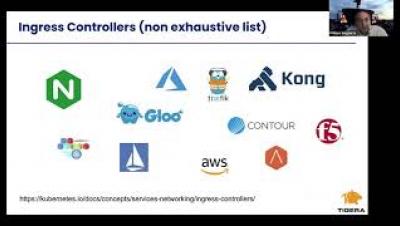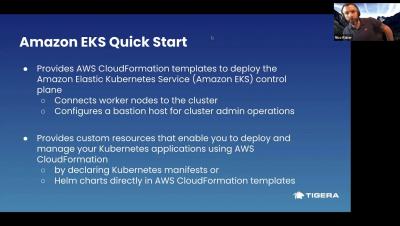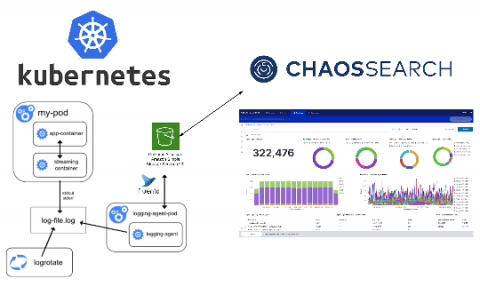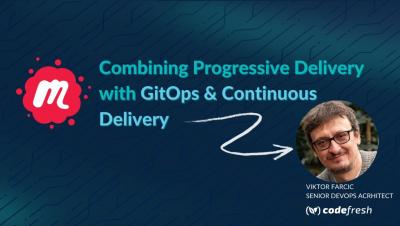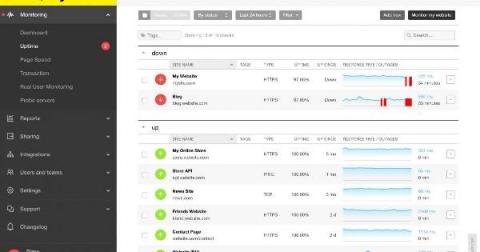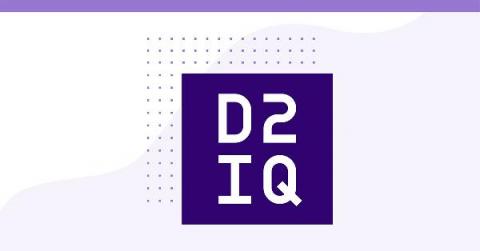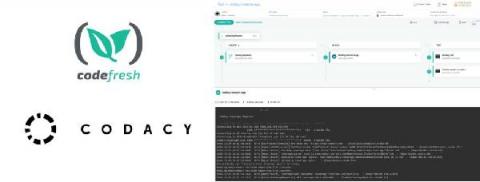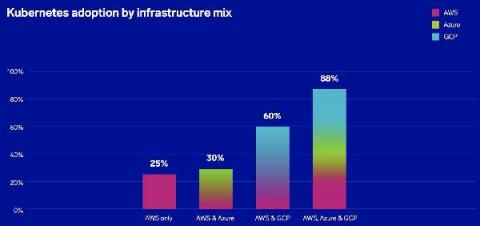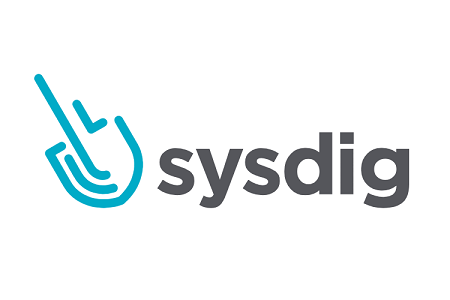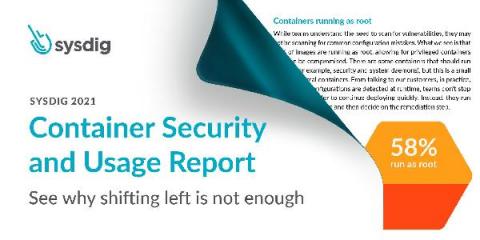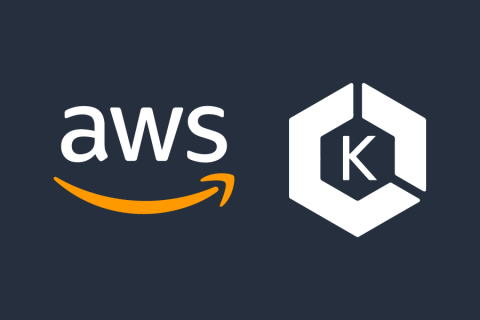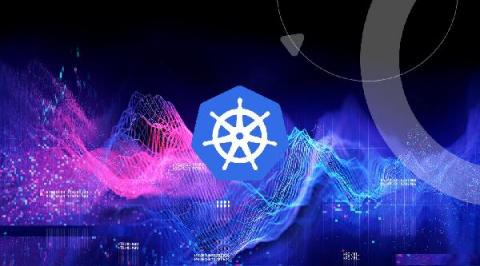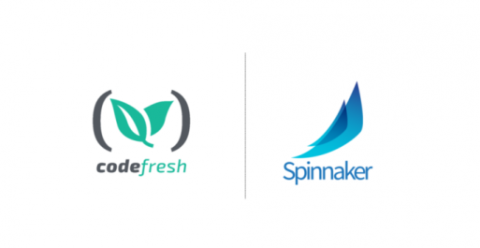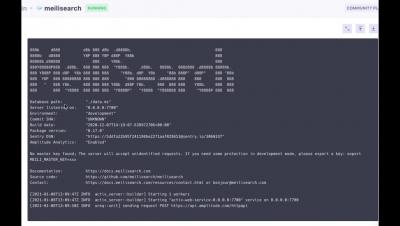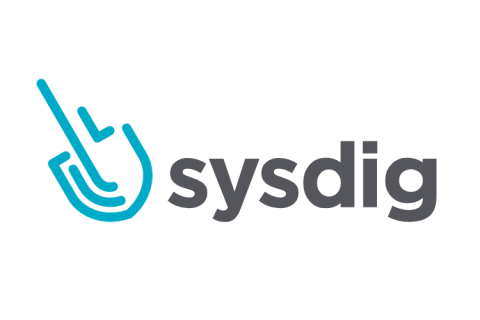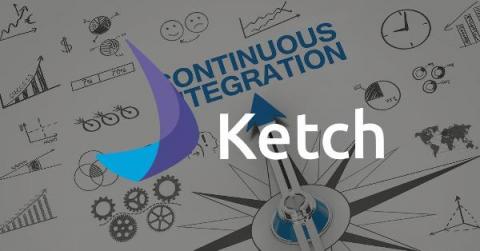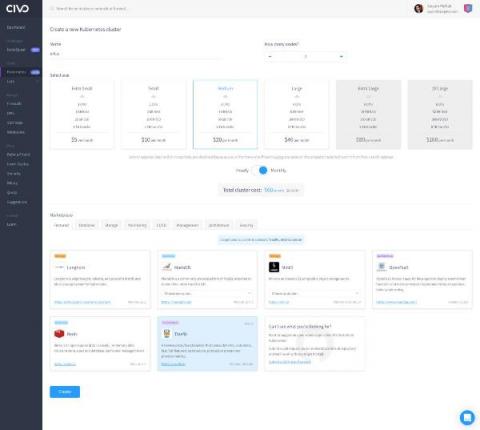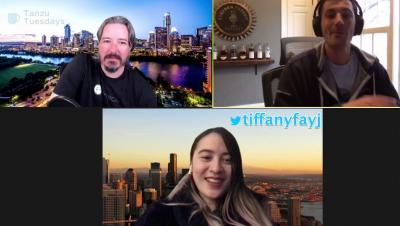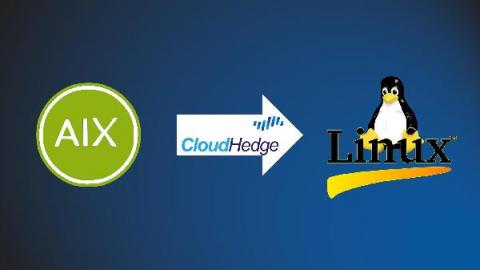Operations | Monitoring | ITSM | DevOps | Cloud
January 2021
Lesson 2: Build generic Docker images
Coffee & Containers - "Leapfrog Over Your Kubernetes Obstacles"
Best Practices for Kubernetes Monitoring
Kubernetes, also known as K8s, is a container-orchestration platform for automating deployment, scaling, and operations of applications running inside the containers across clusters of hosts. Google open-sourced the Kubernetes project in 2014. According to a recent CNCF survey, Kubernetes is the most popular container management tool among large enterprises, used by 83% of respondents. Containers are a good way to bundle and run applications.
Assessing Reliability Risks on Kubernetes Clusters
Peter Grant, Kalai Wei, Gustavo Franco, Corey Innis, and Alexandra McCoy contributed to this post. The VMware Customer Reliability Engineering (CRE) team is proud to announce an open source Reliability Scanner for Kubernetes! It includes an extensible set of reliability assessments, or checks, performed against various components of a cluster, such as Pods, Namespaces, Services, etc. Operators can then configure appropriate constraints for the checks on their clusters.
Surviving the Disaster: How to Identify Bugs Immediately and Get Back on Track
As all developers know, when building software things don’t always go as planned. In fact, most of the time they don’t. With today’s modern distributed architectures it’s more important than ever to have the proper tools in your toolbelt. This allows us to automate as much of the software delivery lifecycle as possible and then be able to immediately triage issues when they arise.
What Is Zero Trust & How Do We Implement It to Run Secure CI/CD Workflows in Kubernetes?
Zero trust is a security concept that is centered around the idea that organizations should never trust anyone or anything that does not originate from their domains. Organizations seeking zero trust automatically assume that any external services it commissions have security breaches and may leak sensitive information.
Kubernetes in the Public Cloud
In a relatively short amount of time, Kubernetes has evolved from an internal container orchestration tool at Google to the most important cloud-native technology across the world. Today’s enterprises are adopting Kubernetes to speed up the development process and build and deploy modern applications at scale, and they’re doing so at an incredible pace.
Canonical & Kubernetes: 2020 highlights
Contact our Kubernetes team We’re now well into 2021, and as we plan ahead for our roadmap and activities around Kubernetes for the year, it helps to look back and reflect on everything that took place for Canonical in the K8s space within the year that passed. Kubernetes has always been a crucial part of Canonical’s vision and contribution to the IT world.
Unlimited Container Pulls from Docker Hub with JFrog Cloud
What's new in Sysdig - January 2021
Welcome to another monthly update on what’s new from Sysdig. Our team continues to work hard to bring great new features to all of our customers, automatically and for free!
Compute Confidently at the Edge with Rancher and Longhorn 1.1
Today’s announcement of Longhorn 1.1, a Cloud Native Computing Foundation (CNCF) Sandbox project, is exciting news for users of Rancher, SUSE’s Kubernetes management platform, and the Kubernetes community. Longhorn is an enterprise-grade, cloud native container storage solution that went GA in June 2020. Since then, adoption has increased by 235 percent.
CI/CD Pipelines for Kubernetes Apps with Pulumi & Codefresh
Delivering modern applications is complicated and requires the coordination of many moving parts. Applications are frequently updated to implement new features and improve security and performance which translates to a better user experience for your customers. To further complicate matters, infrastructure must also be deployed and maintained simultaneously with applications to avoid conflicts or dependencies.
The Future of Kubernetes on DevOps Radio
In this episode of DevOps Radio, Shipa’s CEO and Founder Bruno Andrade joins host Brian Dawson to discuss his thoughts on the future of Kubernetes. DevOps Radio is a CloudBees-sponsored podcast series. Hosting experts from around the industry, the show dives into what it takes to successfully develop, deliver and deploy software in today’s ever-changing business environment. From DevOps to Docker, each episode features real-world insights and a few stories, tips, industry scoop and more.
Delivering Agile Kubernetes Ingress Services for VMware Tanzu
VMware Tanzu eases the adoption of Kubernetes and supports modern applications with an automated application platform for container-based workloads. Since the application delivery components are among the most critical pieces of infrastructure needed to deliver enterprise-grade Kubernetes clusters, an ingress controller and services such as load balancing are typically deployed to enable external users to access the application.
Lesson 1: Don't tag your Docker images with latest -- use specific versions
Troubleshooting Kubernetes Job Queues on DigitalOcean, Part 2
Taming Operational Load with VMware CRE
Every engineering team must manage some level of operational load. But too much of it can get in the way of doing the important and engaging work that will make your organization—and your team—thrive. VMware Customer Reliability Engineering (CRE) is no different. We are a team of site reliability engineers and program managers who work together with Tanzu customers and partner teams to learn and apply reliability engineering practices using our Tanzu portfolio of services.
Tanzu Talk: DevSecOps for US Federal agencies (FIPs, STIGs, auditors, AOs, and all that)
Kubernetes 101: Intro to Kubernetes namespaces, workloads, and architecture
Enterprise Security Controls for Kubernetes
Reusable Pipelines for Microservices: Codefresh Quick Bites
Feature spotlight: Auto Diff - New code vs Prod
When making changes to applications these days, it’s hard to understand and predict the impact of those changes before you deploy. API connections are multiplying, and with new cloud platforms such as containers/serverless, it only add to the complexity. Some people have trouble remembering whether they closed the garage door or turned off the coffee maker. Can you remember all the details of your latest API contract change? Let alone who would be impacted and needed to be notified?
Kelsey Hightower and Shipa for Kubernetes: A Fireside Chat
On October 22, 2020, Shipa launched a new web series called “Coffee & Containers.” C&C was conceived as a place for practitioners and IT leaders to learn and collaborate on all things microservices, cloud-native, containers, Kubernetes, etc. We were very proud to launch this series with Kelsey Hightower, Thought Leader and Developer Advocate at Google Cloud Platform, and Bruno Andrade, Founder and CEO of Shipa.io.
Running InfluxDB 2.0 and Telegraf Using Docker
While the Docker buzz has faded a bit, replaced by new words like “Kubernetes” and “Serverless”, there is no arguing that Docker is the default toolchain for developers looking to get started with Linux containers, as it is fairly ubiquitous and tightly integrated with a variety of platforms.
Getting Started with Docker and Cloudsmith
Kubernetes Deployment Antipatterns - part 1
In our previous guide, we documented 10 Docker anti-patterns. This guide has been very popular as it can help you in your first steps with container images. Creating container images for your application, however, is only half the story. You still need a way to deploy these containers in production, and the de facto solution for doing this is by using Kubernetes clusters. We soon realized that we must also create a similar guide for Kubernetes deployments.
Kubernetes Deployment Antipatterns - part 2
This is the second part in our Kubernetes Anti-patterns series. See also part 1 for for the previous part and part 3 for the next part. You can also download all 3 parts in a PDF ebook.
Kubernetes Deployment Antipatterns - part 3
This is the third and last part in our Kubernetes Anti-patterns series. See also part 1 and part 2 for the previous anti-patterns. You can also download all 3 parts in a PDF ebook.
Trends in 2021 Dev-Led Landscape
Nowadays developers are in the driver’s seat regarding a lot of decisions for the tools they use. In this update from Tyler Jewell, he covers what he sees are the Top 5 trends that will take place this year. While it’s a bit of a crowded chart, he plots the companies that he sees driving these trends. If you drill into the Service Catalog trend, Jewell sees a couple of different groups working on ways to help developers deal with the deluge of Services (aka APIs).
Calico Enterprise: An Overview
As we enter a new year, it’s an appropriate time to reflect on our achievements at Tigera and how much Calico Enterprise has evolved over the past year as the industry’s leading Security and Observability solution for Kubernetes Networking and Microservices.
Kubernetes deployments without YAML using Ketch
I used Rust in production for 6 months! Here's my feedback
Are you in two minds when it comes to learning new programming languages? Probably you may feel the same when you first heard about Rust programming language. Good things require some effort and here's what I have to say after using Rust programming language in production for a 6-month duration – It is great and Simply superb! Let's get the clear practical experience picture with Rust at Qovery.
Falco vs. AuditD from the HIDS perspective
In this blog, we will compare and contrast Falco vs. AuditD from a Host Intrusion Detection (HIDS) perspective. AuditD is a native feature to the Linux kernel that collects certain types of system activity to facilitate incident investigation. Falco is the CNCF open-source project for runtime threat detection for containers and Kubernetes. We will dig deeper into the technical details and cover the installation, detection, resource consumption, and integration between both products.
Troubleshooting microservices on K8S
AWS Quickstart for Calico
Kubernetes is eating the world; you can digest K8's plume
Coffee & Containers - Fireside Chat with Kelsey Hightower
Shipa 1.2 Release
Shipa (https://www.shipa.io), the full lifecycle application-centric framework for Kubernetes and multi-cluster portability, just got better! Version 1.2 is now available, and we are excited to share these key new features and improvements with the Shipa community.
Combining Progressive Delivery With GitOps And Continuous Delivery
Walking Through a Call From Pingdom Alert to DigitalOcean Managed Kubernetes
Correlating Pingdom Alerts With AppOptics and Loggly in DigitalOcean Kubernetes
Look Back on the Cloud Native Virtual Summit featuring Kubernetes: Thom McCann, T-Mobile
Thom McCann, senior manager and software engineer at T-Mobile, discussed how Kubernetes drove rapid growth and millions of dollars in savings, helping T-Mobile become the number two wireless provider in the U.S.
Surprised By Your Bills? 5 Essential Tips to Manage Cloud Kubernetes Costs
If you’re spending more than you expected on your Kubernetes deployment, you’re not alone. Many Kubernetes operators are experiencing higher Kubernetes costs than what they had predicted. That’s because, like many aspects of Kubernetes, identifying how to manage or lower costs can be challenging. In this article, we provide 5 essential tips for how you can achieve a more cost-efficient Kubernetes deployment.
K3s Internals: The Crazy Things We Do To Make k8s Simple - w/ Darren Shepherd, Rancher Labs
Getting up and running with Calico On-Prem
Code Coverage Reports using Codacy and Codefresh
Where do you usually track your code coverage? If you are not sure about the answer to this question or you would like to explore other options to the ones that you are currently using, then this post is for you. Specifically, this post details how you can use Codacy in your Codefresh pipeline to create and send coverage reports of your repository with every pipeline build. To follow along, make sure to have a Codacy and a Codefresh account. If not, now is the time to set-up a fresh account for free!
Faster and safer application deployments on Kubernetes with Shipa and Oracle Kubernetes Engine (OKE)
Shipa’s application management framework, integrated into OKE, provides an out-of-the-box way for organizations to build, deploy and operate the full life-cycle of Kubernetes applications. With Shipa and OKE, organizations can make up for lost time and start getting value out of Kubernetes immediately. In this webcast, you will learn how Shipa and OKE.
Multi-cloud development is accelerating adoption of Kubernetes
Why Application Modernization Holds the Future of 5G
For anyone working in telecommunications, the capabilities of 5G are clear. Its rollout has already begun across APAC, with hotspots in Sydney and Melbourne, Hong Kong, Seoul—there are even 5G-enabled robots being used to help to fight COVID-19 in Thailand.
Sysdig Usage Report Finds Shifting Container Security Left is Not Enough
Sysdig 2021 container security and usage report: Shifting left is not enough
The fourth annual Sysdig container security and usage report looks at how global Sysdig customers of all sizes and industries are using and securing container environments. By examining how and when organizations are implementing security in the development lifecycle, we have been able to uncover some interesting data points in this year’s report. For example, we can see that 74% of organizations are scanning container images in the build process.
Runtime Threat Detection on AWS
Combining Progressive Delivery with GitOps & Continuous Delivery
Look Back on the Cloud Native Virtual Summit featuring Kubernetes: Katie Gamanji, American Express
Kubernetes has become the default container orchestrator framework, setting the standard for application deployment in a distributed architecture. At D2iQ, we’re proud to work with some of the world’s largest organizations as they deploy and manage Kubernetes clusters on their cloud native journeys.
Three Transformations Powering App Modernization
The pandemic has accelerated digital business initiatives. Ultimately, it’s the application that delivers new capabilities to customers and employees; but transformation occurs at several layers to support those applications. At VMware, we see our customers navigating three transformations, each of which supports digital business and app modernization at different levels.
Celebrating VMware Tanzu's Momentous Year, and a Look at What's Ahead
App modernization has played an outsize role in many organizations’ digital transformation journeys throughout 2020. In fact, 70 percent of IT leaders indicated that they’ve prioritized app modernization efforts because of the pandemic, according to a September 2020 thought leadership paper commissioned by VMware in which Forrester Consulting surveyed more than 200 global enterprise CIOs and SVPs of IT.
Runtime Threat Detection on AWS
Tanzu Talk: Seeding Culture. DevOps, product management, & improving software in large organizations
Getting up and running with Calico on your Rancher Kubernetes Cluster
Calico & Calico Enterprise: Now Available as AWS Quick Starts
As an AWS Advanced Technology Partner with AWS Containers Competency, Tigera is thrilled to announce that Calico and Calico Enterprise are both now available as AWS Quick Starts. If you’re unfamiliar with the concept, an AWS Quick Start is a ready-to-use accelerator that fast-tracks deployments of key cloud workloads for AWS customers.
Learn How to Get Observability into Your Applications with New KubeAcademy Course
When developing applications for Kubernetes, which is a distributed system, developers and platform engineers need to know both how to monitor them and understand how they impact their business. There are several tools available to instrument Kubernetes clusters and code, but figuring out which options are the right ones can be challenging. That’s why we created the Introduction to Observability course on KubeAcademy.
The Big Deal About Big Data and Kubernetes
Should you run big data workloads on Kubernetes? Not so long ago, most people would have said certainly not. Among the reasons you might have heard: Although early adoption of Kubernetes was dominated by stateless services rather than data-centric applications, more and more teams responsible for big data platforms are now looking to adopt Kubernetes, especially those looking to deploy and operate big data workloads in the cloud.
How We Simplified Synthetic User Experience Monitoring Using Ephemeral Containers in Kubernetes
Learn how AppDynamics helps execute existing synthetic user monitoring workloads at scale and more cost-effectively using a cloud-native, “Lambda-like” Kubernetes architecture.
DevOps Challenge - Kubernetes Deployment: Ketch vs YAML
Ketch (https://www.theketch.io) is an open-source application delivery framework for Kubernetes. YAML is a human-readable data-serialization language. It is commonly used for configuration files and in applications where data is being stored or transmitted. Customized YAML files are used by many for the complicated task of deploying to Kubernetes.
Codefresh vs Spinnaker
The appearance of containers and their performance benefits compared to the existing paradigm of virtual machines has forced several companies to rethink their software lifecycle, especially the delivery part. Continuous integration and deployment tools (CI/CD) are passing through a second renaissance phase which is characterized by new approaches centered around short-lived environments that are launched and destroyed in a much more dynamic way.
Deploy your first app with Qovery
How to deploy Meilisearch in just a few seconds on AWS with Qovery
DevOps Challenge - Ketch vs YAML
Guide to Monitoring Kubernetes, Part 2: Which Metrics and Health Conditions You Should be Monitoring
Welcome back to our series of Kubernetes monitoring guides. In part 1 of this series, we discussed the difficulties of managing a Kubernetes cluster, the challenges of conventional monitoring approaches in ephemeral environments, and what our goals should be as we think about how to approach Kubernetes monitoring.
Stackrox Acquisition: The Race to Secure Containers
Today, Red Hat announced its intent to acquire Stackrox. This is a very exciting development in the world of cloud-native security! First and foremost, congratulations to Stackrox, an early participant in the container security space. This acquisition is a great outcome for Stackrox given their nascent scale and on-premises offering.
Deploying AWS Lambda with Docker Containers: I Gave it a Try and Here's My Review
Among all the new features and services that AWS announced during the re:Invent 2020, my favorites were definitely the AWS Lambda updates. And there were many! For example, your code execution is no longer rounded up to the nearest 100ms of duration for billing — you are now billed on a per millisecond. On top of that, AWS increased the Lambda’s memory capacity to 10 GB, and correspondingly the CPU capacity up to 6 vCPUs.
Deploying applications to Kubernetes from your CI pipeline
Now that we know the advantages of leveraging Ketch over other tools such as Helm to ease the deployment of our applications (BLOG: Helm vs. Ketch when Deploying Applications), a good next step is for us to understand how we can tie Ketch to our CI pipeline and have an automated deployment process. For this example, we will leverage Ketch, GitHub Actions, and a Kubernetes cluster on Google Kubernetes Engine (GKE).
How to Use InfluxDB with Its Python Client on Kubernetes
In this tutorial, we will discuss InfluxDB and its Python client. We will deploy InfluxDB inside a Kubernetes cluster and then use the InfluxDB Python client to send data to InfluxDB.
Why Kubernetes is a game-changer for E-commerce
When I started working at Purple managing the E-commerce stack, I inherited a single AWS EC2 instance that represented our entire infrastructure. The problem was, the company was doubling in size every few months, and with this exponential increase in load combined with the issues we were already experiencing with this infrastructure, it became a large business risk.
Tanzu Tuesdays - Kubernetes with vSphere. Integrated Simplicity. With Kenny Coleman
Automated App Modernization from AIX to Linux in Days
When we talk about going Cloud-Native we often think about Microservices as well, probably because that’s where the actual innovation, time, cost-saving, and better utilization of resources happen. And CloudHedge is keenly focused on helping enterprises to bring the benefits of containers to traditional legacy business applications that are run on a widely used operating system: AIX!
Understanding Kube-Proxy
Looking Back at 2020 and How We Remained True to Our Mission to Make Building Software Easier Despite The Pandemic
The last year was undeniably a different year for everybody. At the start of 2020, Coronavirus spread all over the world, resulting in a global pandemic. Covid affected the way we live, work, meet other people, and has drastically changed everyone’s lives in ways that we could not ever imagine. In a world of uncertainty, DevOps has undeniably become even more important.








